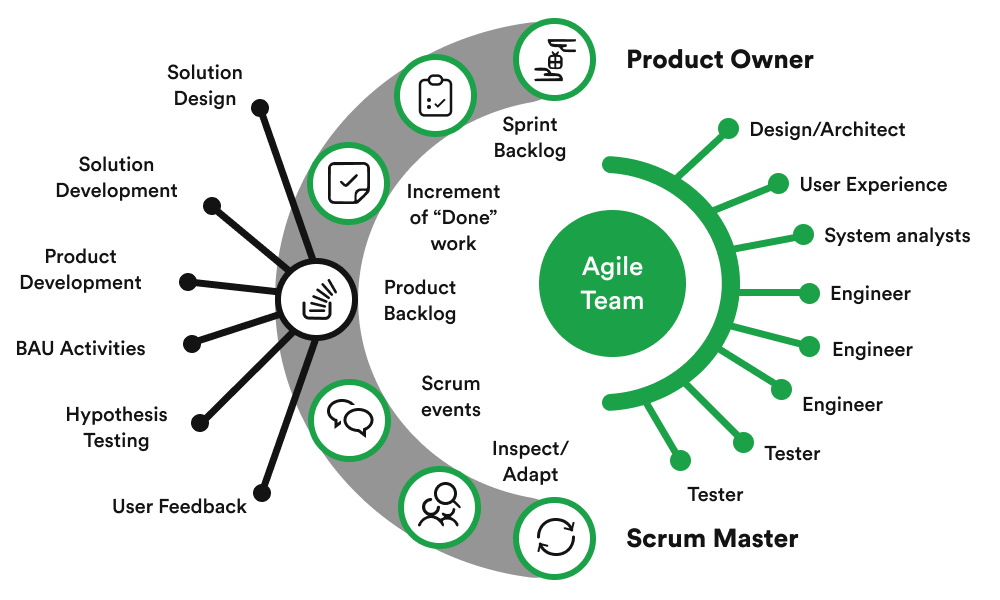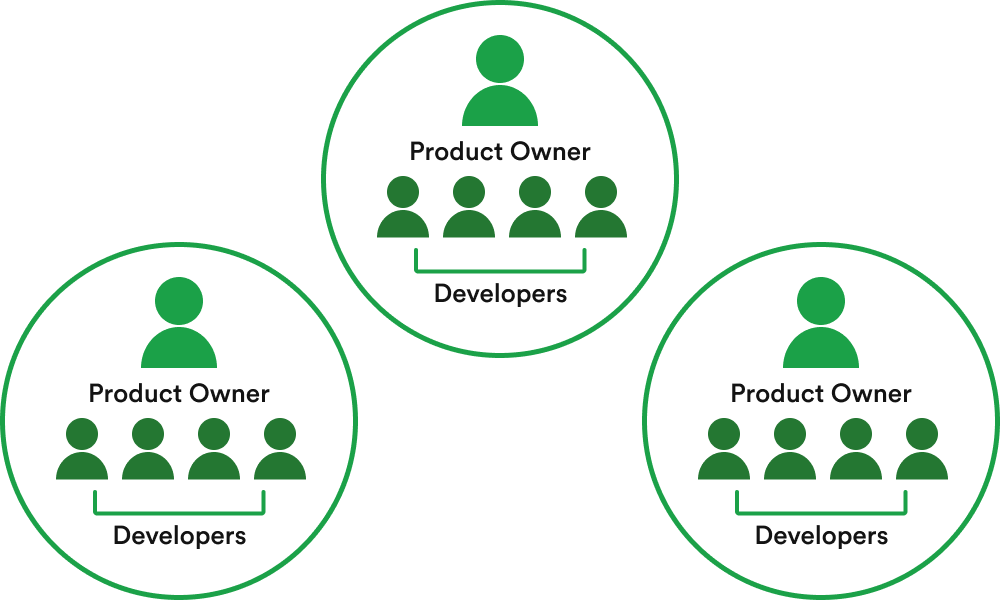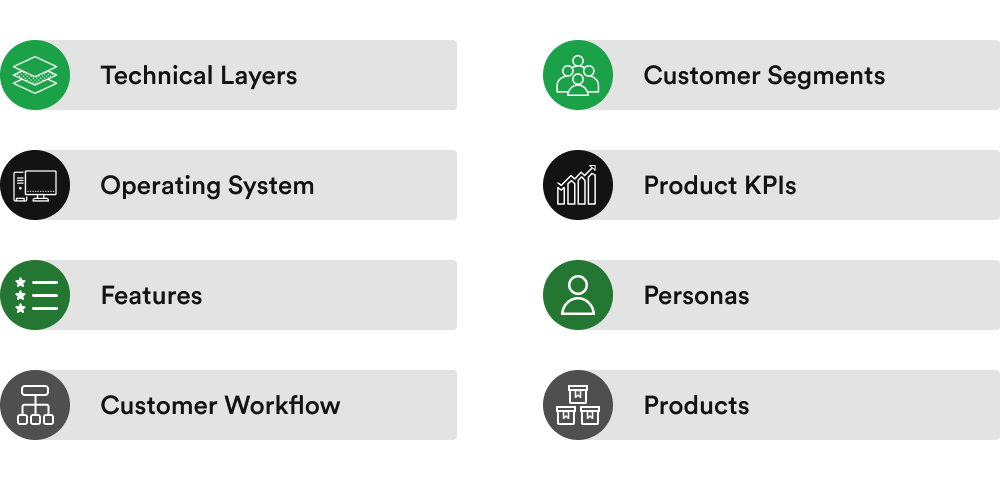
Software Teams vs. Squads: What’s the Best Approach for Your Next Project?
The article looks into advantages and disadvantages of using Agile Teams versus Agile Squads in software development projects.
So, what’s the best approach for your next software development project? Agile Teams or Squads?
Before we dive into the key differences, let’s define them.
An Agile team is a cross-functional group of people that have everything they need to create a working, well-tested product.
Agile teams are usually co-located and are often fully dedicated to a project during its duration, with no commitment to other projects.
The team is typically cross-functional, and the roles will vary depending on project needs and the type of Agile framework chosen.
For example, when using Scrum, an Agile team should have a Scrum Master, Product Owner, and other required team members (e.g., front-end developers, back-end developers, UX/UI designers, testers and QA engineers, etc.). The Scrum Master (can be a team lead or project manager) oversees the project, facilitates collaboration, and organizes daily meetings. The product owner ensures that the final product meets customer requirements. Domain experts and other stakeholders can contribute to the project as needed, but they are not usually considered part of the Agile team.
Each team member contributes their unique skill set to the success of the project and is held accountable for their work.
Agile teams offer many advantages. They allow for:
There are some disadvantages, but the primary drawback is scaling. Software teams may not always scale well, especially if the size of the team grows beyond 15-20 members. Whenever this happens, efficiently managing the software development project can quickly become challenging.
However, some teams have also run into issues when using Agile. These Agile flaws can derail a project and jeopardize its success, so it’s important to recognize and address them before they get worse.
Some of the disadvantages are:
Agile teams aggregate large amounts of data into small user stories that don’t contain a lot of detail. This can make it difficult for the developer to understand the exact customer requirements. Without a well-documented plan or formal process, team members can easily get confused as they go through project stages.
Customer needs are constantly changing, which inevitably leads to the project scope expansion. Deliverables increase rapidly, and new features are often added to the workload. Some requirements may need to be completely rewritten or replaced with updated ones. Teams can get overwhelmed and lose control of these requirements, not knowing which ones to prioritize.

In contrast to software teams, software squads are smaller groups of people who are responsible for specific tasks. Created by the streaming giant Spotify, squads are similar to cross-functional teams but operate independently.
Squad members are assigned tasks and report directly to the squad leader. The squad leader plays the role of an Agile coach or anchor developer for the squad. These squads usually have three or four development pairs engaging in “pair programming.”

Spotify is a popular music streaming platform that allows users to listen to millions of songs online. To build their business, Spotify created a new organizational structure called the Spotify model.
This new organizational structure was designed to solve the problem of having hundreds of employees working on a single project. First introduced in a white paper a decade ago, the Spotify Model was the first to introduce squads into the software development environment.
The Spotify model uses four fundamental principles:
In autonomous software development teams, each individual has complete freedom to choose their own path. They can use whatever software development methodology or framework they are most comfortable using to get the job done.
In the Spotify model, focus ensures that all members are accountable for a common purpose. For example, complete the overall software development project.
From a macro “focus,” we can narrow it down to personal accountability. Each member of the squad will know precisely what they should do.
Transparency ensures that everything is shared among all members.
Like Agile teams, squads have many advantages. However, the main advantage is that they can quickly respond to changing requirements.
Other advantages include:
Time is one of the most common risks in product development. As products evolve and new challenges arise, teams that are not flexible and adaptable struggle to meet deadlines. Since squads plan together according to their capabilities, share knowledge and communicate frequently, they can remain flexible and adaptable. Thanks to this, they can minimize downtime, quickly overcome difficulties and offer a predictable speed of project implementation.
Squads enable waste reduction and downtime minimization. Each squad member participates in sprint planning, so each person is assigned specific tasks that collectively match the squad’s capabilities. Because squads typically use rolling-wave planning, they can quickly adapt and change to meet changing project requirements. This allows us to avoid typical downtime issues such as waiting, underutilized staff, and over-processing.
Co-location offers several benefits that are often underestimated. It helps
Besides this, squads that share the same workspace can learn about each other’s strengths and weaknesses and get to know each other better, which helps them develop trust and become more effective as a collective.
At rinf.tech, each of our squads works towards common goals in the product development process— for example, implementing a certain feature by a certain due date.
Squads are autonomous in deciding how they are going to achieve their goals within the overall product strategy. While the product owner creates user stories according to the product’s goals, squads determine the best way to accomplish them. We’ve found that this practice makes our squads more efficient and creative, which ultimately leads to better products.
We’ve found that this practice makes our squads more efficient and creative, which ultimately leads to better products.
Project teams typically face two major challenges in product development: knowledge and personnel risks.
The former is the result of poor communication and collaboration, leading to a knowledge gap where each person has the knowledge to do their part but does not know what the other members are responsible for. The latter is the risk associated with project team members. For example, if someone is fired or has an emergency and needs time off, there’s no one to replace them.
Squad-based development helps reduce and mitigate these risks by encouraging cross-functional teams able to have a 360-degree view of the project. The easy knowledge transfer within squads allows them to adapt quickly if a staffing problem arises without starting from scratch.
Wrapping up, Agile Squads provide the following benefits:
Like anything in life, software squads also come with some disadvantages. The main one is that they are challenging to manage since they lack a central point of control.
Other disadvantages include:
As Squads require a completely different approach to work, recruitment and management practices should reflect the required approach.

If you want to scale the Agile approach at your organization, a Squad could be ideal because of its simplicity. It helps software developers manage a massive project by breaking down tasks into smaller, manageable chunks. For example, a Java squad can just focus on Java-based functions.
If you already have disciplined and organized developers onboard, it will work well because it’s an informal approach that enables innovation and self-management. It also perfectly aligns with agile principal benefits like greater adaptability, improved quality, and customer satisfaction.
Agile squads are highly recommended for projects where innovation is prioritized over predictability.
Before implementing a Squad model, project managers and product owners must keep in mind that it’s essentially a generic software development model. They can adapt it as needed to suit their specific business needs better.

The article looks into advantages and disadvantages of using Agile Teams versus Agile Squads in software development projects.

This article shares tips and the best practices of software team scaling from business and technical perspectives.

This article explores the concept of Squad-based product development (a.k.a. the Spotify model) and answers when it makes and doesn’t make sense to use it.
Copyright © 2023 rinf.tech. All Rights Reserved.
Terms & Conditions. Cookie Policy. Privacy Policy.
Politica Avertizari de Integritate (RO)